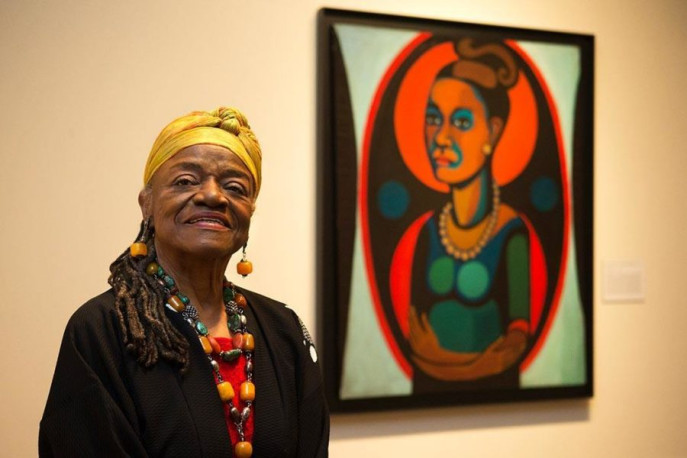
by: Ellen C. Caldwell
for JSTOR Daily
Artist Faith Ringgold is known for her painted “story quilts.” Expanding upon the tradition of quilting, she adds large painted scenes to the central panel of her quilts and then surrounds these with narrative text panels. With these, she creates extensive series of quilts, strengthened by their seriality and a strong narrative that ties together each individual piece through a detailed plot line.
In her quilt series The French Collection, 1991-1994, Ringgold uses this combination of painted images, narrative text, and decorative borders to explore the often absent role of African-American women in the art-world, particularly in Paris during the 1920s.
In a preface to an interview with Faith Ringgold, Melody Graulich and Mara Witzlingintroduce some of the roots of, and motivations behind, Ringgold’s desire to explore the art of the European masters in her distinct and unique way. After returning from a trip to Europe with her mother and daughters, Ringgold “began to try to find a way to create images of black people, technically by finding a way to render black skin tones, and thematically by producing portraits of members of her community, of ‘real’ black people, whose images had been absent in her formal art education. ‘Instead of looking to Greece, I looked to Africa.’”
In the first of twelve quilts comprising The French Collection, Ringgold opens the series showing Willia, the star of the quilts, with her friend Marcia and Marcia’s three little girls…
